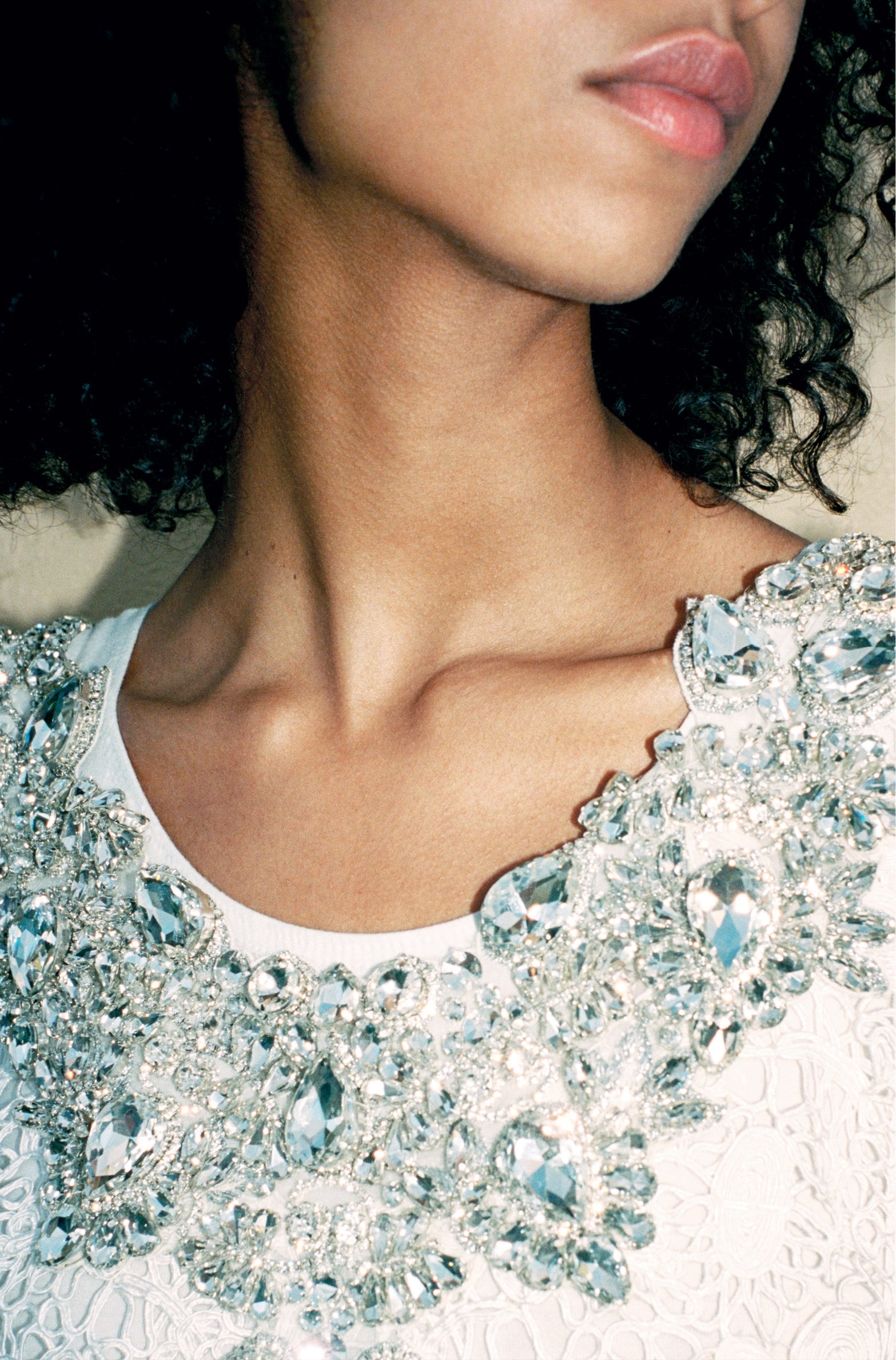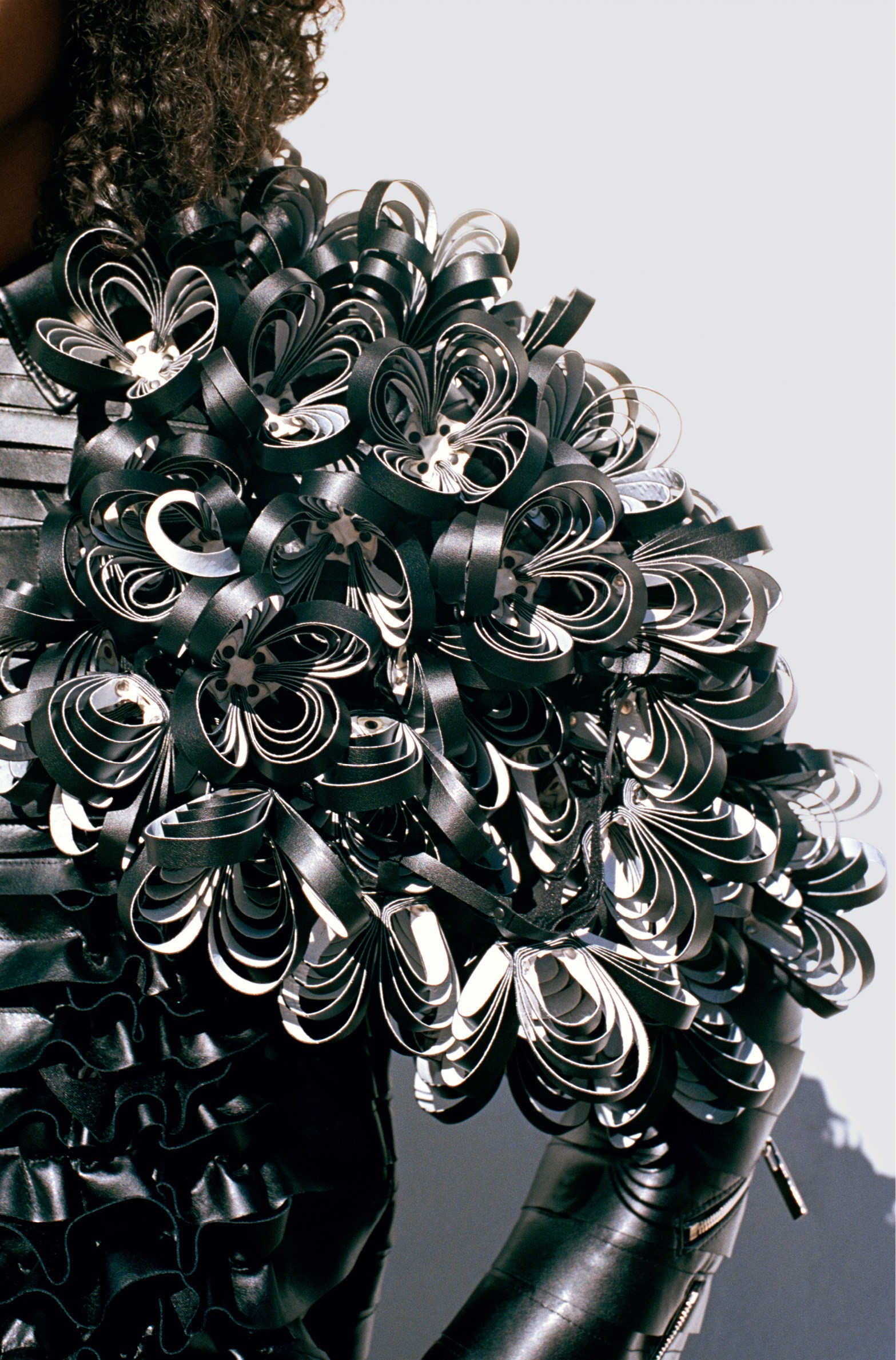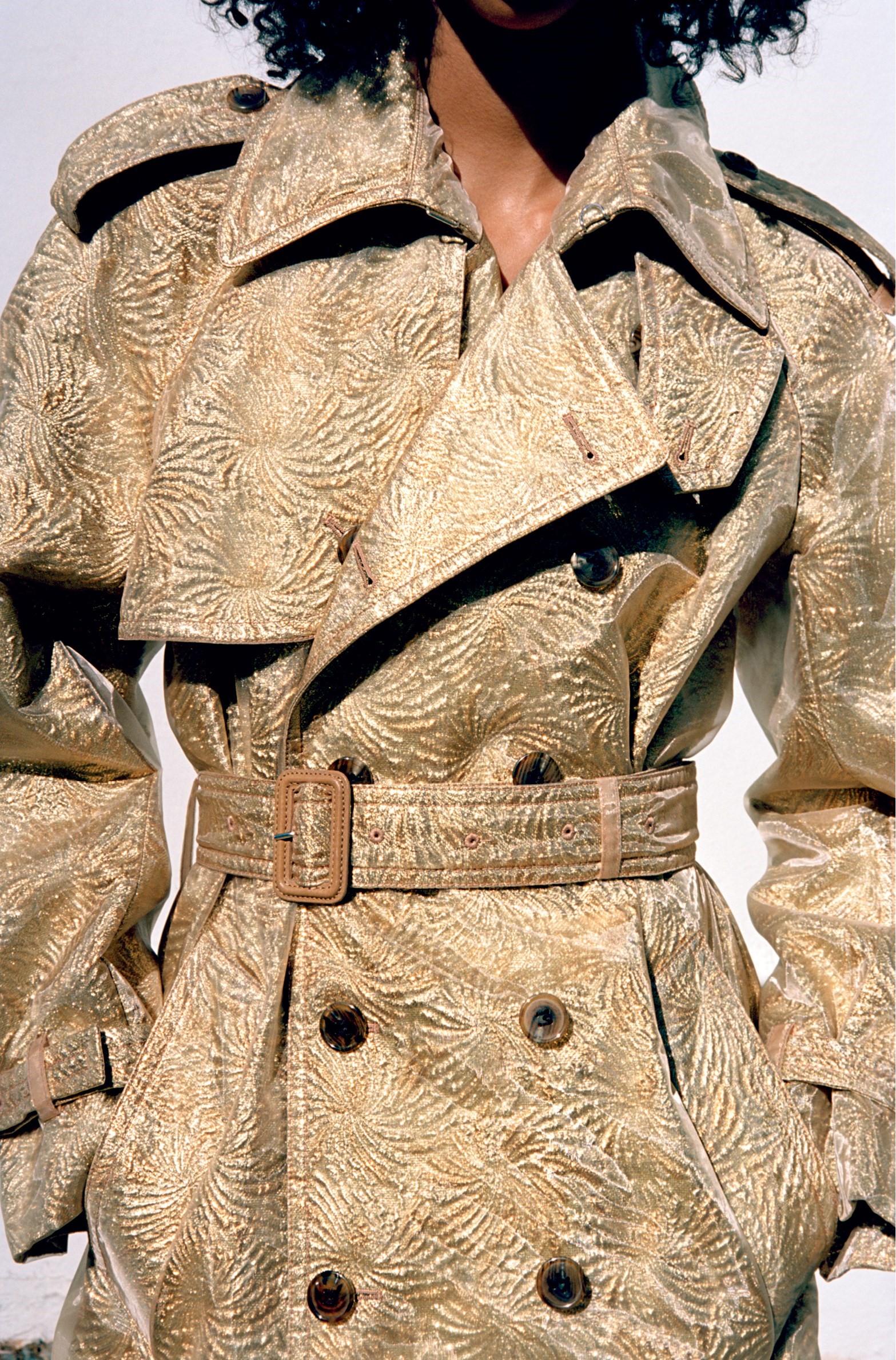Fashion’s current fetish is fabric – or rather, fabrication. Designers are rarely, if ever, content with using the same stuff as anyone else – at Première Vision, the twice-yearly Paris textile showcase where labels select their materials for the upcoming season, exclusivity is fought over and sought after, with houses monopolising examples of specific yarns and techniques. Even then, properties are pushed, with special designs and purpose-dyed colours and compositions denied to any other.
But that isn’t enough. Besides exclusive textiles, fashion brands are pushing their surfaces to new extremes – embedding hours of work into the material, often before the garment is even cut, let alone sewn. This urge has seen a resurgence in traditional crafts: obvious examples like embroidery and lace-making, but also lesser-known twists, including needle-punching. The latter is a laborious process joining two fabrics without sewing, instead piercing through the top layer with fine barbed needles and pulling threads of the lower layer to the surface, creating a seamless transition from one textile to the next.

Why the fabrication fixation? It’s a straightforward and direct way to make a mark, to create something pointedly different. But it’s also a new breed of contemporary luxury – when cashmere is being sold at Uniqlo and every handbag has a crocodile variant, age-old signifiers of wealth and privilege are being upended. Plus, these intricately wrought fabrics feel modern in a way those materials don’t. Many offer designers the opportunity to craft something to their precise specifications, to make something of such a degree of complexity it could never have been realised previously – certainly not for ready-to-wear. This surfeit of surface detail is all part of a search for uniqueness that, arguably, occupies modern culture as a whole. As Kei Ninomiya, of the Comme des Garçons-owned label Noir Kei Ninomiya, has stated, the intention is “to create forms no one has ever seen before”. Or at least, not for a while.
Ninomiya’s kind of craft is unseen, if not unprecedented. Utilising synthetic fabrics – most consistently polyurethane ecological leather, which he cuts into straightforward diagonal-zipped biker jacket silhouettes – Ninomiya pushes the notion of decoration to new extremes. Make that construction as well as decoration: using means other than stitching to create his effects, Ninomiya makes garments from geometric shapes tessellated and attached by studs, fine ribbons of fabric looped into rosettes, or otherwise intricately pleated and folded to bristle into 3D reality. The idea is to discover new ways to make, he says.

It’s striking when juxtaposed with Jonathan Anderson’s work at Loewe, couched as it is in age-old hand-worked techniques – often revived from the brink of extinction. Craft has been the focus of the designer’s remarkable resuscitation of this 172-year-old Spanish brand: it’s the hallmark of the label’s contemporary identity, a point of differentiation with other fashion houses. Anderson often makes simple, straightforward clothes at Loewe – sweaters, trench coats, shirts – but the intense focus on work in their surfaces elevates them into the realm of the extraordinary. For spring, he made much use of the aforementioned needle-punching technique, but rather than fusing disparate fabrics (its common use by other designers), Anderson needlepunched the tails of a pinstriped jacket into a merino-wool sweater (a paisley scarf got caught in there too). It looks impressive, slick, one garment bleeding into the next like an optical illusion. But touch it and it transforms again. “When you go into a shop to buy, you’re already bored with the new stuff. Because you’ve seen it so long ago,” Anderson once told me. “I don’t know what the solution to that is. Unless every garment you put down a runway photographs one way but is completely different on the rack.”
“Martin [Margiela] isn’t a minimal designer. If you look at his early work, it’s full on. The layering, the intricate cuts, the messages. It’s really full on” – John Galliano
That is something Anderson presaged, with this focus on craft in his new incarnation of Loewe. It’s a notion other designers have latched onto also, reinforcing the element of surprise in collections that, via the ubiquity of catwalk imagery, have become familiar, and hence tired, before they are even available. While pictures dazzle with the sparkle of Christopher Kane’s crystal cage-dresses, it takes the hand to understand the depth of their embroidered layers, cut out and laid over further 3D effects in rich crochet lace.

At Maison Margiela, John Galliano overlaid golden figured cloqué with a veil of nude crin – an act that bears literary as well as physical dissection. The term cloqué hails from the French for blistered, describing its bubbly figured surface; while crin (like crinoline) is a semi-transparent synthetic fabric normally used to stiffen the skirts of grand haute couture ballgowns. On paper, it sounds as if Galliano had literally turned a couture dress inside–out – but in person, again, one must grab it, touch it, to comprehend the work involved. “Martin [Margiela] isn’t a minimal designer,” Galliano says. “If you look at his early work, it’s full on. The layering, the intricate cuts, the messages. It’s really full on.” So, indeed, are these clothes.
That’s the idea all around with these fetishistic fabrications. It’s a sensory indulgence: mystify with sight, seduce with touch. Fetish isn’t just about kinky fixations; the word originated on the coast of West Africa and was used to describe an amulet or charm, which warded off evil and granted its owners good luck. It is derived from the Latin facticius – an adjective meaning made by art. The Portuguese language translated the term to feitiço, meaning a spell or sorcery. Today, fashion is hankering after all the above, these technique-obsessed designers’ handiwork imbuing their multi-layered fabrics with reverence, fantasy, wish-fulfilment, and desire.
Model: Aiden Curtiss at Next NY. Casting: Svea Greichgauer at AM Casting. Photographic assistant: Johnny Knapp. Production: Webber.
This story originally featured in the Spring/Summer 2018 issue of AnOther Magazine, which is on sale now.
